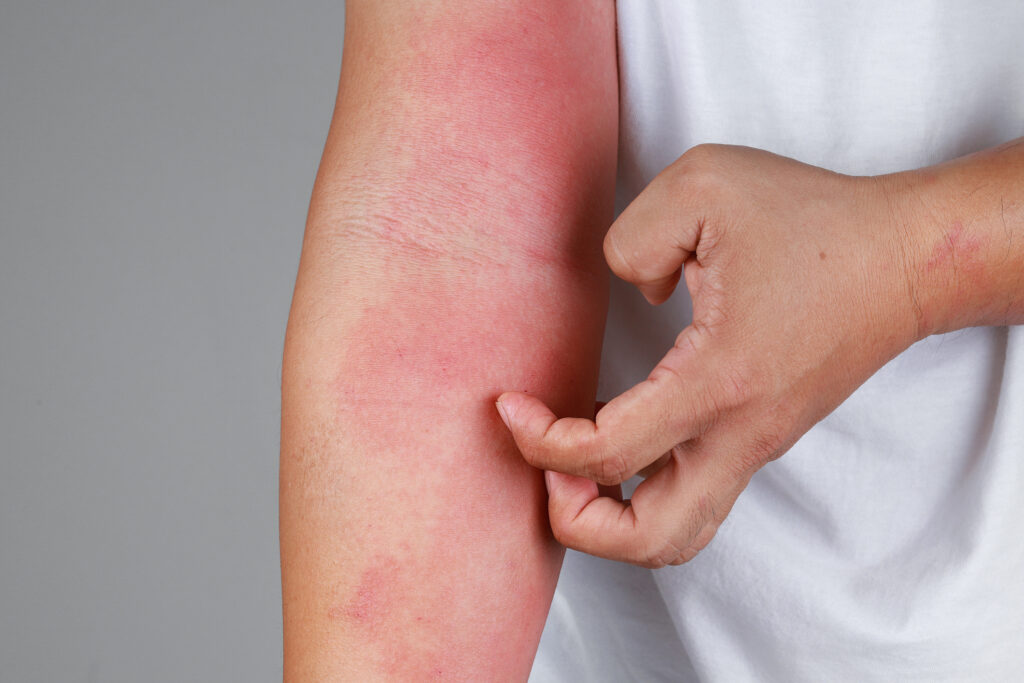What Causes Eczema Flare-Ups in the Fall?

As the cooler temperatures of fall begin to creep in, you may be noticing more than just the leaves beginning to change. For many individuals who experience eczema, dryer, itchier skin may also be causing a flare-up. Eczema season is here.
Eczema season is in the fall
Colder weather brings less humid air. Additionally, the use of heaters also significantly dries out the air in our workplaces and homes. As we go from inside to outside throughout the day, constant temperature changes going from warm inside to cold outside can shock our skin. These drastic changes require additional skin care in order to maintain the protective barriers that keep skin healthy. For individuals with eczema, though, flare-ups happen once bring brittle, scaly, rough, tight skin has prevailed.
Your immune system can be affected by hormones, so stress is also another common trigger for an eczema flare-up. The beginning of a school year or changes at work around this time of year may worsen flare-ups. Building in time for self-care is not just important to your overall health, it can also reduce symptoms of eczema.
Tips for reducing flare-ups
- Avoid over-cleansing eczema areas
Washing your hands in the fall can cause them to become dry, cracked, and chapped. When possible, limit washing and scrubbing. When it is necessary to wash your hands, use a handwash that is soap-free and liberally apply lotion or moisturizer immediately after. If your hands do become dry, use a thick cream or ointment moisturizer before bead and consider wearing cotton or bamboo gloves while you are sleeping.
- Use a heavier moisturizer to protect your skin
Regular moisturizing is an essential part of skincare for individuals with eczema. Rather than thin lotions that are light and watery, thick cream or ointment moisturizer is better, especially for areas that are severely dry. Liberally apply moisturizers immediately after a bath or shower while your skin is still damp.
- Know your triggers & treat flare-ups promptly
While eczema triggers are as unique as the individuals experiencing them, there are some common triggers and things to avoid or at least to be aware of as you prepare for the change of seasons.
- Climate factors: change in season, extreme heat, extreme cold, dry weather, humid weather, altitude, prolonged exposure to hot water (it may be beneficial to lower the temperature of your shower or bath in order to prevent flare-ups)
- Materials: non-organic materials such as polyester or latex, wool and other materials rough in texture
Eczema will often manifest more in flexural areas, like behind the knees or elbows, where skin creases rub and become irritated or have more amounts of sweat that dries out on the skin. When thinking about materials that may cause a flare-up, it is important to protect those areas of greater risk.
Proper skincare is essential for your comfort and overall health. Call Swinyer Woseth Dermatology for eczema help needs! Contact us to achieve the comfort and confidence that you desire. Call our office at 801-682-4715 to speak with a helpful representative and schedule with one of our friendly dermatologists today!
